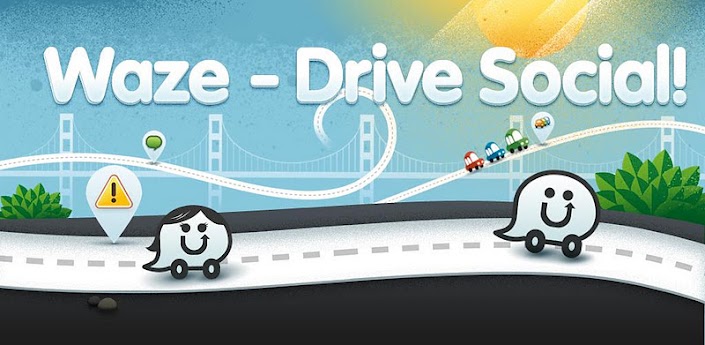Waze: More than Colored Lines on a Map
Image credit:theunlockr.com
Conventionally, our geographic knowledge is drawn from linguistic and analytic tool from cave drawings, landmarks, verbally conveyed directions
(our worst nightmare), and hand-drawn or digitally printed maps, while seeking
interpretations of the evolution prism of such dismal geographic science.
Google Map (LINK) took a leap from a print-based map culture to an
online communicative location competence. Utilising social media for
transportation and geographic input, however, is sporadically observed by Waze.
Waze drew upon the accumulation of scare resources and turned into a
state-of-the-art dynamic transportation information publishing built on
abundance, not scarcity. Waze, a ratched-up social media hybrid of digital
convergence, personal computing, and a 'Wazer Community' network, enriches city
dynamics and the mobile behavioral dependency of the urban inhabitants.
 Participatory sensor network (PSN), derived from Waze, not only sense traffic
conditions, but also reason traffic problems, improve navigation algorithms in
social media by:
Participatory sensor network (PSN), derived from Waze, not only sense traffic
conditions, but also reason traffic problems, improve navigation algorithms in
social media by:(1) providing real-time traffic updates, and
(2) identifying valuable
information undetectable with traditional sensors
(e.g. car accidents,
potholes, speed traps, and hidden police, and roadblocks)
(Qiao 2011; Silva 2013).
Image credit: waze.com
Hence, Waze alter the new media ecosystem by emerging as a flourishing
non-market sector of knowledge, information, and mobile cultural production,
based on a network environment, and applied to any imaginable things (Naughton
2006). Waze's output are not exclusive assets but a multiplying robust ethic of
open map sharing, open for all Wazers to build on, extend, and customize, particularly for modern readers who are navigators, active meaning seekers, and interpreters (Serafini 2012).
Waze steer a new era for the mobile media ecosystem to a more diverse and complex one due to the amount of multi-modal content builders, the interaction density between Waze and Wazers, the roles of Wazers the communication speed of traffic reports, and the ubiquitous networking development pace.
References
Naughton, J. 2006, ‘Blogging and the emerging media ecosystem’, Reuters Institute for the study of Journalism, viewed 25 April 2014, <http://reuteursinstitute.politics.ox.ac.uk/about/discussion/blogging.html>.
Qiao, F., Zhu, Q., and Yu, L. 2011, Social Media Applications to
Publish Dynamic Transportation Information on Campus, Proceedings of 11th
International Conference of Chinese Transporation Professionals (ICCTP), pp.
4318-4329.
Serafini, F. 2012, 'Expanding the four resources model:
reading visual and multi-modal texts', Pedagogies: An International Journal,
no. 7, vol. 2, pp. 150-164.
Silva, T. H., de Melo, P. O. V., Viana, A. C., Almeida, J. M., Salles,
J., & Loureiro, A. A. 2013, 'Traffic Condition Is More Than Colored Lines
on a Map: Characterization of Waze Alerts', In Social Informatics, pp.
309-318, Springer International Publishing.

No comments:
Post a Comment